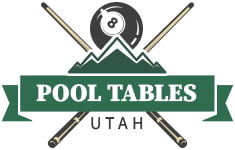A quality ping pong table isn’t just a source of endless fun—it’s an investment in entertainment, skill-building, and connection. Whether you’re a casual player who enjoys the occasional rally or a dedicated competitor fine-tuning your serve, proper ping pong table care is essential to keeping your table in top shape. Like any well-crafted game table, a little attention goes a long way toward preserving smooth gameplay and lasting performance.
Below, we’ll walk through the best ways to clean, store, and maintain your table—so every match feels as crisp and satisfying as your first.

Keep It Clean: Surface, Net, and Legs
The surface of your ping pong table takes the most wear, so cleaning it regularly is the foundation of good maintenance. Avoid using harsh chemical cleaners, which can strip the finish or leave a residue that affects ball bounce. Instead, mix a mild solution of water and gentle dish soap. Dampen a soft microfiber cloth and wipe the table’s surface in circular motions, then dry immediately with a clean towel.
For the net, remove it before cleaning to prevent unnecessary strain on the posts. Use a soft cloth dipped in the same mild cleaning solution, and gently wipe the mesh to remove dust or debris. Once dry, reattach it snugly—but not too tight, as over-tensioning can warp the posts over time.
Don’t forget the legs and undercarriage. A quick wipe-down with a damp cloth helps remove dust, while a monthly check ensures bolts and screws stay secure. Tightening these periodically prevents wobbling or uneven play.
Store Your Table Properly
How and where you store your table can dramatically affect its lifespan. Ping pong tables—especially indoor models—are sensitive to moisture and temperature changes. Always store the table in a dry, climate-controlled space away from direct sunlight, which can fade the surface and cause warping.
If you own a foldable table, ensure it’s locked securely in the upright position before rolling it into storage. This prevents accidental unfolding and damage to hinges or wheels. If your model has caster wheels, clean them occasionally to remove dirt buildup, which helps keep movement smooth and prevents floor scratches.
For compact spaces, vertical storage against a wall is a great solution. Just make sure to use protective padding or a table cover to guard against scuffs and dings.
Prevent Warping and Rust
Warping is one of the most common issues that can affect indoor tables. It occurs when moisture seeps into the surface or when one side is exposed to heat for too long. To prevent this, always keep your table covered when not in use, especially in humid environments. A breathable, water-resistant cover offers the best protection.
If you live in a humid area, consider using a dehumidifier in your game room or storage area to control moisture levels. Likewise, avoid storing your table near open windows, heating vents, or garages where temperature and humidity fluctuate drastically.
For tables with metal components—legs, frames, or corner protectors—rust prevention is key. Wipe down metal parts with a dry cloth after cleaning, and apply a light coat of anti-rust spray if you notice any corrosion beginning to form.
Indoor vs. Outdoor Table Maintenance
While both indoor and outdoor ping pong tables require care, they have distinct maintenance needs.
Indoor Tables: These models are built for stable, dry environments and can be damaged quickly by humidity or sunlight. Always keep them inside, ideally on a flat, temperature-controlled surface. Avoid placing drinks, heavy items, or sharp objects on the surface to prevent scratches or dents.
Outdoor Tables: Outdoor models are designed with weather-resistant materials like aluminum composite tops or treated wood. However, they still benefit from extra protection. When not in use, cover your table to shield it from UV rays, rain, and dust. Even though outdoor tables are tougher, keeping them clean and dry ensures years of reliable performance.
Check for Loose Bolts, Folds, and Wheels
A well-maintained table doesn’t just look great—it plays great, too. Over time, the natural movement of folding, rolling, and adjusting your table can loosen bolts or misalign joints. Every few weeks, take a moment to inspect all hardware connections, folding mechanisms, and wheel locks.
Tighten anything that feels loose but be cautious not to overtighten, as this can strip threads or damage the metal. If your table folds, test the locking system to ensure it clicks firmly into place without wobbling. Smooth hinges and stable support legs are crucial for consistent play and player safety.
Keep It Ready to Play
Maintenance isn’t just about longevity—it’s also about preserving performance. A clean, well-balanced table ensures even ball bounce and smooth gameplay. When cared for properly, even years down the line, your table should still deliver that satisfying, rhythmic rally that keeps players coming back for “just one more game.”
If you’re looking to upgrade or expand your setup, check out Pool Tables Utah’s collection of premium ping-pong tables. Each model combines quality craftsmanship with smart, space-conscious design, so you can enjoy professional-level play right at home.
Conclusion
Caring for your ping pong table is simple—but it requires consistency. From regular cleaning and proper storage to humidity control and hardware checks, these small habits add up to big results. With just a few minutes of attention each month, you’ll extend your table’s life, preserve its performance, and keep your rallies smooth for years to come.
Whether you’re playing indoors or outdoors, remember: good maintenance is the secret to great games.
At Pool Tables Utah, we’re passionate about helping families and players get the most out of their game tables. Explore our full selection today and bring home a table built for play, durability, and lasting memories.



